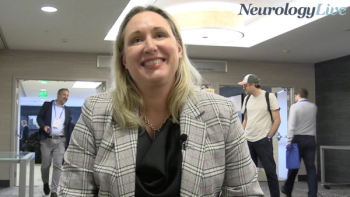
New AASM Guidelines Make Strong Recommendation for Behavioral Therapy in Chronic Insomnia
The new American Academy of Sleep Medicine guidelines are the first to use the GRADE system of evaluating behavioral insomnia therapies.
The American Academy of Sleep Medicine (AASM) has published a new clinical practice guideline that recommends behavioral and psychological treatments for chronic insomnia disorder (CID) in adults (FIGURE).
A strong recommendation was made on the use of multi-component cognitive behavioral therapy (CBT-I), and other positive recommendations included multi-component brief therapies, stimulus control as a single-component therapy, sleep restriction therapy as a single-component therapy and relaxation therapy as a single-component therapy. A negative recommendation was made on the use of sleep hygiene as a single-component therapy.1
"This is the first systematic review to use the Grading of Recommendations Assessment, Development and Evaluation (GRADE) system to evaluate behavioral insomnia therapies," said lead author Jack Edinger, PhD, professor, sleep medicine, National Jewish Health, Denver, in a statement.2 "The multicomponent treatment, CBT-I, is the most supported therapy."
Edinger was part of a task force (TF) of sleep medicine clinicians with expertise in CID that the AASM commissioned to conduct a scientific review of published literature and answer patient, intervention, comparison, and outcomes (PICO) questions on behavioral and psychological treatments of CID in adults. The TF focused on patient-reported outcomes (PROs) of sleep quality, sleep latency, wake after sleep onset and remission and responder rates.
READ MORE:
The TF then evaluated treatments in the literature with the GRADE system that assessed quality of evidence, balance of beneficial and harmful effects, patient values and preferences, and resource use to determine the direction and strength of a recommendation.
The TF made a “strong” recommendation, that clinicians should follow for almost all patients, for the use of CBT-I, based on a large body of moderate quality evidence from 49 studies, including multiple, recent, large randomized clinical trials. The TF found clinically meaningful improvements in critical outcomes and favorable information on cost-effectiveness of CBT-I.
It made “conditional” recommendations, requiring that physicians use their expertise to determine appropriateness for their individual patients’ circumstances, options and resources, for other therapies such as multi-component brief therapies, stimulus control, sleep restriction therapy and relaxation therapy. It recommended against the use of sleep hygiene therapy as a single-component therapy, based on evidence that demonstrated less efficacy than other treatments, although it may still be used as part of a multi-component therapy.
"There have been significant advancements in behavioral and psychological treatments for chronic insomnia, which affects millions of American adults," Kannan Ramar, MBBS, MD, president, AASM, said in a statement. "The AASM guideline will help optimize patient-centered care by providing actionable recommendations for clinicians and patients."
The AASM previously updated clinical practice guidelines for the use of pharmacologic treatment of CID in 2017. Those guidelines emphasize that medications for CID should mainly only be used if CBT-I fails. That TF gave only weak positive recommendations to pharmacological agents such as suvorexant, eszopiclone, zaleplon, zolpidem, triazolam, temazepam, ramelteon, and doxepin. It gave weak negative recommendations to trazodone, tiagabine, diphenhydramine, melatonin, tryptophan, and valerian.3
CID affects about 10% of the US adult population. Read the entire guideline
REFERENCES
1. Edinger JD, Arnedt JT, Bertisch SM, et al. Behavioral and psychological treatments for chronic insomnia disorder in adults: an American Academy of Sleep Medicine clinical practice guideline. J. Clin. Sleep Med. Published online November 9, 2020. doi: 10.5664/jcsm.8986
2. New guideline supports behavioral, psychological treatments for insomnia. News release. AASM. Published December 16, 2020. Accessed January 13, 2020. https://www.eurekalert.org/pub_releases/2020-12/aaos-ngs121620.php
3. Sateia MJ, Buysse DJ, Krystal AD, Neubauer DN, Heald JL. Clinical practice guideline for the pharmacologic treatment of chronic insomnia in adults: An American Academy of Sleep Medicine clinical practice guideline. J. Clin. Sleep Med. 2017; 13(2):307–349.
Newsletter
Keep your finger on the pulse of neurology—subscribe to NeurologyLive for expert interviews, new data, and breakthrough treatment updates.




































